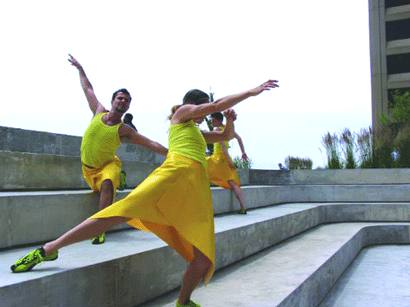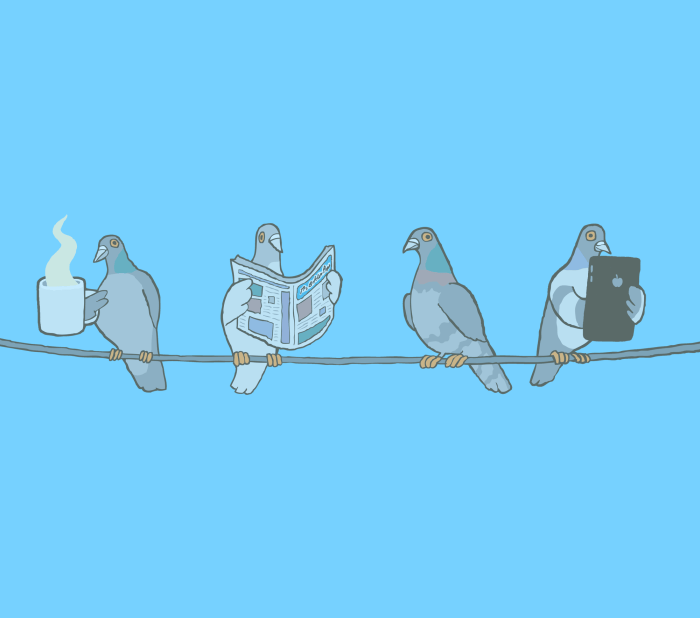Dance oasis in the concrete jungle
The downtown M15 drops me off across from 55 Water Street where I ride two escalators up to a well-kept secret garden called Elevated Acre. Here I discover a panoramic view of the East River under the near-summer sun and haze. Flowers in delicious hues share space with pathways, ledges, stairways, benches, and tables for salad bar lunches. Slender, delicate trees offer no hope for cooling shade, which of course makes Elevated Acre the latest perfect spot for a Sitelines site-specific event—New York dancers can and do adapt to anything.
I locate Douglas Dunn and a few of his performers on a big square of astroturf at the garden’s north end. “Is this where you’ll be dancing?” I ask. “Well, really all over,” he replies. “Where are you starting?” I ask. “Well, really all over.” And so begins the intertwined performances of “Other Distortions” by Dunn’s septet and “Multiple Undo” by Elke Rindfleisch’s trio, high above street level in a charming place I never knew existed.
How is it possible to unfold two dances in the same space at the same time? First, find a habitat big enough for both sets of dancers. Then allow both troupes to range anywhere but mostly stay out of each other’s way—exploring the space with curiosity, treating it with a little humor and perhaps affection. Let a bit of dancing spring up here and there so that a viewer might choose to turn from a duet on the astroturf to follow new action on a distant walkway. Build your garden of movement around your audience, turning viewers into mobile parts of your set. Provide no guidance; let a thousand serendipities bloom.
For this sort of thing, Dunn’s the man. A believer in the wisdom of the natural, he flings a bouquet of dancers—soft, easy-moving, modest posies, dressed in a mix of floral colors—all around the phony plot of grass, concrete steps, and pathways. He does no harm and leaves the environment as he found it.
By contrast, Rindfleisch’s dancers—clad in intense yellow, superb against the filmy sky and Brooklyn skyline—look like daffodils from another planet. Everywhere they land, they create hot, bright spots of focus. Deeply engaged in the architecture of the space, their showy, hyper-extended stretching and lunging underscore the grand size and openness of the space while using it to handsomely offset their own glory. Eventually the daffodils mix it up with the pretty wildflowers, though not in any kind of violent way.
The garden offers Dunn and Rindfleisch many inspirations for movement—the shape and array of petals, the splay of branches, the bend of tall, skinny leaves in the breeze off the river, the hard, straight lines dividing concrete from planted patches of soil. For the audience of office workers and those of us who’d follow dance anywhere, it makes for a peaceable passing of the time.
gaycitynews.com


































